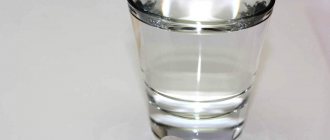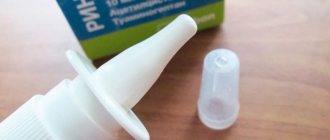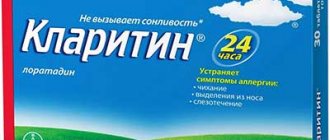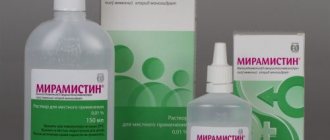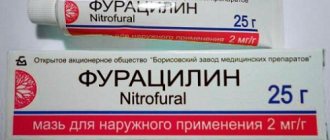Pharmacological action and its mechanism
Kagocel is declared by the manufacturer as an interferon inducer. After taking it, late interferon, consisting of alpha and beta interferon, begins to form in the body. As you know, interferons are the body’s natural defense factors. They activate the enzymes protein kinase and adelyl synthetase. Due to this, the RNA of viruses is inhibited and the synthesis of their protein is suppressed.
Kagocel awakens the production of interferon in almost all types of body cells that participate in the antiviral response. These include granulocytes, B and T lymphocytes, fibroblasts, macrophages, and endothelial cells.
Experimental studies conducted indicate that the drug has antiviral, radioprotective, immunomodulatory and antibacterial properties.
Kagocel helps when taken in mono- or complex therapy for a variety of viral respiratory diseases, influenza, urogenital chlamydia and herpes.
When taking therapeutic doses of the drug, its toxic accumulation in the tissues of the body is not observed. Kagocel does not have teratogenic, mutagenic, embryotoxic or carcinogenic properties. This has been proven through animal research.
A distinctive feature of the drug, provided by its unique composition, is its ability to bring the dynamics of interferon release closer to physiological. After taking the first dose of the drug, its high content in the intestines is achieved within 4 hours and continues to increase to a pronounced maximum in the blood after 48 hours. There is a prolonged circulation of the formed interferon in the body - up to 4-5 days.
The accumulation of the drug during its use occurs in the lymph nodes, liver, spleen, thymus, lungs and kidneys. There is practically no accumulation in the heart, adipose tissue, brain, or muscles. Due to its large molecular weight, Kagocel is practically unable to pass through the blood-brain barrier.
After the drug enters the body, about 20% of the received dose ends up in the bloodstream. Almost all of this amount is associated with macromolecules (proteins, lipids, etc.) and only 16% circulates in free form.
The drug is excreted from the body by the intestines and kidneys. At the same time, excretion in feces accounts for 90% of the excreted drug. Elimination is quite slow. Only after a week does the body get rid of 88% of the dose of Kagocel taken. Thanks to this property, a 4-day dose is sufficient to treat diseases.
"Kagocel" - general information
After administration, the drug forms late interferon, the cells of which have high antiviral activity.
The antiviral agent does not have high toxicity and does not accumulate in the body. The components included in the drug are not mutagenic, carcinogenic or teratogenic. Also, the medicine does not cause any pathological changes inside the fetus during pregnancy. When taking Kagocel, effectiveness occurs if treatment is prescribed no later than the fourth day from the appearance of the first signs of the disease. For preventive purposes, the drug is used at any time and immediately after live contact with the infectious agent. Side effects may include allergic reactions. The drug is contraindicated in children under 6 years of age and with increased individual sensitivity to the components of Kagocel. Although the drug is non-toxic, it is also contraindicated during pregnancy. "Kagocel" can be taken together with other immunomodulators, antivirals and antibiotics. How to Simply Recommend
Why the medicine does not work The key to successful treatment is, of course, following all the doctor’s recommendations and informing him of all significant changes during therapy. However, a specialist can talk as much as he wants about the regimen and duration of taking the drug, but most patients will still violate these rules. Read more
Indications
What does Kagocel help with? This question interests many. The instructions for the drug include the following instructions for use in adults:
- to prevent influenza and ARVI;
- therapy of influenza and acute respiratory viral infections;
- for the treatment of herpes;
- for the treatment of urogenital chlamydia.
Kagocel tablets are prescribed to children from the age of 3 for the treatment and prevention of influenza and various acute respiratory diseases of a viral nature. Kagocel for children under 3 years of age is a contraindication for use.
Available research data indicate that Kagocel helps to significantly improve the condition of patients already on the first day of taking the drug to treat influenza. At the same time, there is a normalization of body temperature and a noticeable decrease in symptoms of intoxication. In case of influenza complicated by a sore throat, relief of the inflammatory process in the pharynx is accelerated when Kagocel is added to complex therapy.
Analogs
Doctors identify a number of analogues that can replace the drug Kagocel:
- Anaferon;
- Arbidol;
- Ingavirin;
- Amiksin;
- Ergoferon;
- Cycloferon;
- Cytovir-3;
- Remantadine and others.
Kagocel, Anaferon or Arbidol - which is better?
Anaferon and Kagocel differ from Arbidol in that they have powerful immunomodulatory properties and activate the production of endogenous interferon by the body. Arbidol acts on the hemagglutinin protein, which leads to the elimination of viruses.
The drug Kagocel has many analogues. It is better to find out which drug to prefer from your doctor.
Anaferon and Kagocel are often prescribed for the prevention of influenza and ARVI, while Arbidol is more often used to treat an existing virus. Arbidol is a domestic drug, so its price is quite affordable for most patients.
Arbidol has a minimal number of side effects, but unlike Kagocel, it is included in List B (a register of drugs that are prescribed with extreme caution, since complications may arise when used without careful medical supervision), which in itself can alert the patient
Ingavirin
Ingavirin is a fairly popular drug with an antiviral effect, which is widely used in winter to treat ARVI. The mechanism of its action is the effect of biologically active components on the processes of reproduction and renewal of pathogenic microorganisms. The drug also has a strong anti-inflammatory effect.
Ingavirin is produced in capsule form. The drug is not recommended for use for the prevention of acute respiratory viral infections, so it is significantly inferior to Kagocel, which is effective in preventing the occurrence of respiratory infections.
Amiksin
According to the mechanism of action, Amiksin is similar to the drug Kagocel, since both of them are synthetic interferon inducers. Amiksin differs only in that the therapeutic effect after administration occurs after 4-24 hours. Doctors recommend using it for urgent conservative treatment in adults.
The disadvantage of Amiksin is that it is prescribed to children from 7 years of age, while Kagocel is prescribed to children from the age of three.
Ergoferon
Ergoferon is a drug with a wide spectrum of action. It contains anti-inflammatory and antihistamine substances. The drug has a powerful antiviral and immunomodulatory effect. A distinctive feature of Ergoferon from Kagocel is that it can be used by children aged 6 months and older. Also, Ergoferon’s list of indications is more extensive than Kagocel’s.
The average price of Ergoferon is 350-400 rubles.
https://youtube.com/watch?v=4MYXXE3xpE0
Cycloferon
Cycloferon is a low-molecular-weight interferon inducer with immunomodulatory and anti-inflammatory properties. The drug can be used effectively for herpes, influenza and acute respiratory viral infections in the early stages of their appearance (the first 5 days).
Cycloferon is involved in the synthesis of gamma globulin and also improves the human immune system. In terms of effectiveness, it is no worse than the drug Kagocel, but costs 30-40 rubles less.
Children are allowed to take Cycloferon from the age of 4 years.
The drug is contraindicated for women during pregnancy and lactation, and for patients with hypersensitivity to the components.
Possible side effects are allergic reactions.
Tsitovir-3
Tsitovir-3 has a mechanism of action similar to Cycloferon, but has a higher cost. This is due to the fact that Cytovir-3 contains vitamin C. Thanks to ascorbic acid, the immune system is activated.
The drug is produced in the form of capsules and powder for preparing an oral solution for children. It comes in two flavors - strawberry and orange. The solution is intended for children from 1 year.
The drug is contraindicated for patients with diabetes, women during pregnancy, as well as people with individual intolerance to the components.
The course of prevention and treatment should not exceed 4 days. If necessary, the course can be repeated after 20-30 days.
Remantadine
Remantadine is a rather outdated antiviral drug. Its mechanism of action is to prevent the virus from entering the body's cells. The drug is prescribed to children from 7 years of age and adults. The indication for use is influenza at an early stage, and Remantadine is also used for the prevention of tick-borne viral encephalitis.
The price of the drug is 35-50 rubles.
Contraindications
Although the drug is generally safe, in some cases you will still have to stop using it. Such cases include:
- hypersensitivity to any component of the drug;
- children under 3 years of age;
- Kagocel is prohibited for use during pregnancy;
- breast-feeding.
The use of Kagocel in these groups of patients is prohibited due to the lack of ongoing studies confirming its safety for use in them, and not because it does not help.
People who are lactose intolerant, lactase deficient, or have glucose-galactose malarsorption should not take the tablets due to the lactose monohydrate content in the drug.
Does Kagocel kill the virus?
Kagocel is effective in the treatment of ARVI, it helps to quickly relieve painful symptoms and improves the body's resistance. But in order to understand exactly how this drug eliminates foreign aggressive cells, it is necessary to understand the structure of the coronavirus itself.
Studies have shown that the new pathogen contains RNA, that is, a specific viral genome that integrates into our cells. It also has a protein shell that can “attach” with special processes to our blood proteins, growing and suppressing the immune system. The action of Kagocel is aimed at increasing interferon, thus enhancing the body's antiviral response.
According to some studies, the active substance Gossypol blocks glycoproteins of the outer membrane of the new coronavirus. Thanks to this, Kagocel prevents the penetration of RNA of a foreign genome into a human cell and prevents its replication.
What is the effectiveness of the drug
In Russian medicine, the domestic brand drug “Kagocel” is used in the treatment of acute respiratory viral infections and other viral diseases. The main component Gossypol in combination with carboxymethylcellulose forms a “barrier” of interferon to protect the body from viral, bacterial and tumor dangers. In addition, the drug has a powerful antioxidant effect, helping to quickly relieve a person from the symptoms of flu and colds.
The effectiveness of this remedy is recognized in Russia, but is not considered by WHO to be the basis for the treatment of coronavirus infection. However, Western scientists will not rule out its therapeutic effect, which, according to the rules, must be registered in other countries. However, since 2010, Kagocel has been on the list of vital drugs approved by the Government of the Russian Federation.
Topical: Are chills a sign of coronavirus?
Dosage and regimen
The most important question: “How to take Kagocel?” Instructions for use contain the following treatment regimen for influenza in adults:
- Days 1 and 2 of use – 3 doses of 2 tablets each;
- Days 3 and 4 of treatment – drink 1 tablet 3 times a day.
Method of administration for preventive purposes for adults:
- the first 2 days – a one-time dose of 2 Kagocel tablets per day;
- the next 5 days - do not take the medicine.
The course can last from 7 days to several months. In this case, Kagocel is repeated in cycles according to the above-described scheme. Prevention with medication can be carried out at any time, for example, during a flu epidemic or after contact with a sick person.
It is recommended to treat herpes with Kagocel with a five-day course. Each of these days you need to take the medicine 3 times a day, 2 tablets.
To treat viral infections and influenza in young patients aged 3–6 years:
- 1–2 days – you should take 1 tablet twice a day;
- Days 3 and 4 – drink 1 tablet per day.
Children over 6 years of age are prescribed a different method of administration:
- the first 2 days, take 1 tablet 3 times a day;
- for the next 2 days, take 1 tablet twice a day.
A preventive course of treatment for children over 3 years of age consists of cycles including:
- 2 days of use, 1 tablet;
- 5 days break.
It is allowed to repeat from one to several cycles of administration if necessary.
Effect of the drug on viral infections
How does Kagocel act on the virus? It should be noted that all drugs of the interferon group, to which Kagocel belongs, have an inhibitory effect on viruses. The only question is whether we started treatment immediately or when the virus has progressed throughout the body. In order to understand this, you need to understand that Kagocel is also used prophylactically, why use it prophylactically, and then that Kagocel, penetrating the protein shell of the virus, destroys it and kills the virus from the inside. To do this, in the first days of the disease, the drug may be used in increased doses. Since it has been scientifically established that Kagocel is not toxic, even a reasonable increase in dosage will not harm the body, but it is still best to follow the dosage prescribed by your doctor.
Kagocel for children: instructions for use state that the drug is prescribed to children from 6 years of age, which means that the drug is prohibited from being taken under 6 years of age. Very often, domestic pediatricians ignore age restrictions on drugs, citing the fact that the effect of Kagocel on a child’s body under 6 years of age may not have been studied, which is why the instructions indicate what to take from 6 years of age. But if the drug gives positive results, parents can afford it and children like it, why not give it before 6 years of age? Here everyone decides for themselves.
Kagocel tablets: instructions for use, it is indicated that for adults with an already established disease, a two-day regimen of six tablets per day in three doses is best suited, and from the third day to the fourth inclusive according to the regimen of three tablets in three doses. In preventive practice, Kagocel is recommended to be taken as a weekly course, alternating two days, two tablets each, then a five-day break.
Let's once again recall the drug Kagocel, its use for colds and viral diseases, and another specificity of the drug for herpetic infections in adults. The instructions for use of the drug Kagocel do not separate the course and dosage of taking the drug for colds and herpes, so it would be logical to follow the standard regimen for adults.
Indications for use
Let us clarify the indications for use of Kagocel in order to avoid misunderstandings. The first and most important use of Kagocel is for viral respiratory diseases in children and adults. Another area of application for the drug is urogynecological infections in adults, which ones the doctor will recommend. Also, herpes infection occurs in adults, but it can also occur in children. What then? In the case of Kagocel, it has been established that the drug is non-toxic, but according to the doctor’s decision, this drug can also be used in children.
Kagocel for children:
Kagocel children's instructions for use state that children from six years of age take an increased dosage in the first two days, namely three tablets per day in three doses, and in the next two days two tablets per day, divided into two doses. But what if the child has a body weight almost like that of an adult? It is logical that in this case the child dosage may not be enough for him and then the effectiveness of the drug will be low. Therefore, you should not self-medicate; your doctor will select the dosage individually for you and your children.
The medicine Kagocel is being used in more and more families, because alternative drugs are less effective and more toxic. Let's return once again to the question of Kagocel, method of application and dose. Doses are individual; it is used orally with plenty of fluids, like many analogues. Of course, not all children over 6 years old, and yet the drug is prescribed precisely from this age, are able to swallow a whole tablet. Here the issue is resolved more simply, the main thing is that the child takes the required dose of the drug per day, and even if you break up the tablet and give a couple more doses, the main thing is that you do not exceed the dosage norm.
special instructions
Kagocel tablets are most effective when you start using them in the first 4 days of illness.
There is no effect of the drug on psychomotor reactions. Therefore, there is no prohibition on driving vehicles and potentially dangerous mechanisms.
The composition of the drug allows it to be taken by elderly patients without dose adjustment.
Children's age is not an obstacle to taking Kagocel. However, only when young patients reach 3 years of age.
Kagocel
REGISTRATION NUMBER: TRADE NAME OF THE PRODUCT: Kagocel®
(
Kagocel®
) INTERNATIONAL NON-PROPENTED NAME: none.
CHEMICAL NAME: Sodium salt of copolymer of (1→4)-6-0-carboxymethyl-β-D-glucose, (1→4)-β-D-glucose and (21→24)-2,3,14,15, 21,24, 29,32-octahydroxy-23-(carboxymethoxymethyl)-7, 10-dimethyl-4, 13-di(2-propyl)-19,22,26,30,31 – pentaoxaheptacyclo [23.3.2.2 16.20. 0 5.28 .0 8.27 .0 9.18 .0 12.17 ] dotriaconta-1,3,5(28),6,8(27), 9(18),10, 12(17), 13,15-decaene. DOSAGE FORM: Tablets. COMPOSITION: Active substance: Kagocel®
12 mg. Excipients: potato starch - 10 mg, calcium stearate - 0.65 mg, Ludipress (composition: lactose monohydrate, povidone (Kollidon 30), crospovidone (Kollidon CL)) - to obtain a tablet weighing 100 mg. DESCRIPTION: Tablets from white with a brownish tint to light brown, round, biconvex with brown inclusions. PHARMACOTHERAPEUTIC GROUP: Antiviral agent. ATX CODE: [J05AX]
Admission Tips
To achieve maximum effect from treatment with Kagocel:
- Consult your physician before use.
- Carefully read the contraindications and possible side effects. The annotation for the drug Kagocel will help with this.
- Strictly adhere to recommended doses. Do not exceed them to avoid overdose.
- It is better to start taking Kagocel in the first hours of illness.
- It is necessary to take the tablets with a sufficient amount of liquid.
- Do not break, crush or chew the tablets. They must be swallowed whole.
- Reception can be carried out without reference to food.
How does Kagocel work for influenza and ARVI?
The drug has an antiviral effect on herpes and influenza viruses, and also stimulates the synthesis of endogenous interferon in the body cells responsible for the formation of immune reactions. Unlike exogenous interferon administered in the form of drugs, endogenous interferon does not have side effects and more quickly stimulates the immune response when the virus enters the human body. Exogenous interferon can have various side effects: headache, dizziness, increased anxiety, depression. Pain in the epigastric region, nausea, vomiting, and impaired liver function may also occur. It was the presence of a large number of side effects when using exogenous interferon that prompted domestic scientists to create an antiviral drug that helps the immune system produce its own endogenous interferon.
Interferon is a nonspecific endogenous immune factor that affects viral proteins and viral RNA. The drug stimulates the production of alpha, beta and gamma interferon. The antiviral drug Kagocel helps the body fight viral infectious diseases, preventing the penetration of influenza and herpes viruses into cells, limiting their further reproduction. Medical scientists have developed an antiviral medicine consisting of a molecule of plant origin, as well as a nanopolymer, which made it possible to reduce the loss of therapeutic effectiveness when delivering active ingredients to the site of a viral infection. The significant size of the molecule does not allow the drug to penetrate to a significant extent through the natural barriers of the circulatory system; the concentration level of the active components in the blood plasma does not exceed 10-20% of the therapeutic dosage.
The medicine contains the following components:
- Active ingredient – Kagocel 12 mg;
- Excipients: starch, lactose monohydrate, povidone, calcium stearate.
The pharmacokinetics of a drug depends on the properties of the components included in its composition. Taking Kagocel orally in a single dose increases the level of interferon in the blood plasma after 3-4 hours, but the maximum concentration of interferon is observed after 48 hours. Circulating in the blood plasma, endogenous interferon has an antiviral effect, which, even with a single dose of the drug Kagocel, lasts 4-5 days, which allows the drug to be used for the prevention of influenza and acute respiratory viral infections during epidemics. The active components of the drug are partially bound to proteins, as well as lipids in the blood plasma. In addition, Kagocel has direct and indirect antitumor effects.
Kagocel when breastfeeding children under one year old, as well as during pregnancy, does not have a negative effect on the development of the fetus and newborns. Taking Kagocel in a therapeutic dosage does not cause significant side effects; the drug does not penetrate the blood-brain barrier, and therefore does not have a significant effect on the central nervous system.
Kagocel belongs to the group of antiviral drugs that exhibit their activity primarily against influenza viruses, herpes, and some protozoan pathogenic microorganisms (for example, chlamydia).
The effectiveness of an antiviral drug can be affected by digestive processes. It is recommended to take Kagocel before meals or after meals 1-2 hours, orally, with water. It is recommended to swallow the tablets without chewing.
Advantages and disadvantages
Advantages of the drug:
- high safety of use;
- Helps equally well as a preventive and therapeutic agent for respiratory diseases of a viral nature and influenza;
- the possibility of combined use with other drugs;
- convenient way to use;
- unique composition.
Minuses:
- high price;
- prohibited for use by pregnant and lactating women;
- unproven effectiveness.
Action speed
Within a few hours after taking the drug, interferon titers in the body begin to increase. During the day, the active substance accumulates in organs, where the highest concentration of immune system cells is observed - in the spleen, lymph nodes, and thymus.
However, Kagocel, as a rule, does not act instantly. When taking Kagocel, the interferon titer reaches its maximum values two days after starting the drug. The maximum effect when taking Kagocel is achieved after 5 days.
Storage conditions and release from pharmacies
The drug is classified as over-the-counter. To purchase it you do not need a prescription from a doctor. One package contains 10 tablets. This should be taken into account when purchasing, since a course of treatment for influenza in adults will require 2 packs of Kagocel.
The tablets should be stored at room temperature and humidity, out of the reach of children.
Description of the drug
It should be noted right away that Kagocel is allowed to be used for influenza. Its use is practiced by many therapists to quickly eliminate acute respiratory diseases in patients.
According to the instructions for use, Kagocel is a synthetically derived drug that belongs to the group of interferons. Its main therapeutic effect is to increase the production of gamma interferons, due to which the patient’s functioning of the body’s defenses is quickly normalized.
Moreover, due to the activation of special substances, the medicine is able to inhibit the activity of proteins of the pathogenic virus, which is why the person recovers faster. Moreover, Kagocel is also effective because it promotes the production of interferon in almost all types of cells that are directly involved in the body's antiviral response.
Also, due to the fact that Kagocel for influenza is practically non-toxic and cannot accumulate in the body, it is very well tolerated and rarely causes adverse reactions in patients. This is its undeniable therapeutic advantage.
It is important to note that Kagocel flu tablets can be used directly both for the treatment of cold viral diseases and for the prevention of their development. In both cases, the medicine will be equally effective.
Immediately after administration, the drug is quickly absorbed in the intestines and begins to act. The maximum concentration of its active substance is observed four hours after administration.
The medicine is excreted along with urine and feces.
You should also know that even after the end of treatment, the immunomodulatory effect of Kagocel persists for another 2-3 days. Because of this, it is convenient to use in small doses to prevent influenza virus infection.
Kagocel is widely used for the treatment of acute respiratory diseases
List of analogues
There are no drugs on the pharmaceutical market that have a similar composition.
It is possible to replace the drug with another one that has a similar effect, at a cheaper or more expensive price. Such drugs include:
- Arbidol – from 251 rubles,
- Amiksin - from 521 rubles,
- Cycloferon – from 170 rubles,
- Remantadine – from 54 rubles,
- Aflubin – from 364 rubles,
- Amizon - from 170 rubles.
Prices for these drugs were taken from Yandex Market in November 2016. The replacement of the drug must be carried out after consulting with your doctor or pharmacist.
"Kagocel": analogues
The pharmacological market offers the following medicinal alternatives to Kagocel:
- "Anaferon" is a homeopathic antiviral drug. The price varies from two hundred to five hundred rubles. Reviews about the Kagocel analogue are ambiguous: there are many people dissatisfied with the effect of the drug, who claim that it is just a placebo without a clinically proven effect.
- "Arbidol" is an antiviral drug with an active substance called umifenovir. The price for it starts from three hundred rubles. Some pharmacies sell one blister each. Judging by the reviews consumers leave about Kagocel, it is much more effective than Arbidol in fighting the flu and colds.
- Remantadine is an antiviral drug developed back in the Soviet years. It is cheap - about sixty rubles per package. Alas, its effectiveness leaves much to be desired: over the years, viruses have adapted to Remantadine, and now it is practically useless in most cases. In addition, it has many side effects and contraindications. Reviews of the Kagocel analogue called Remantadine are often negative.
- In addition to its antiviral effect, Cycloferon also effectively reduces pain. Excellent for sore throat, sore throat, and muscle pain. Able to relieve pain from radiculitis. With regular use, it strengthens the immune system. According to its chemical formula, the main active ingredient is closest to Kagocel interferons.
Overdose
There is very little data on overdose with this drug. At the same time, there is information that if the permissible dosage is significantly exceeded, a person may experience nausea, vomiting and abdominal pain. In this condition, a person should immediately consult a doctor.
We also recommend: What to take for a cold with fever
Treatment of overdose is symptomatic. It consists of taking sorbents and drinking plenty of fluids. Gastric lavage is performed less frequently.
If an overdose occurs, drink plenty of fluids immediately
Features of use for the treatment of influenza
According to recent studies, the use of the drug Kagocel for influenza and acute respiratory diseases helps significantly reduce the risk of complications and allows a person to quickly cope with the cold virus. Moreover, this medicine facilitates the overall course of the disease, so the patient can tolerate it more easily.
We also recommend: Azithromycin for flu
Thanks to its effective immunomodulatory effect, Kagocel strengthens the body's defenses, thereby promoting the “switching on” of human immune reserves.
In order for the use of this drug to be truly effective, the patient is recommended to follow the following doctor’s recommendations during therapy with it:
- Take the exact dosage of the medicine and do not exceed it, as this may worsen the person’s condition and the therapeutic effect of the medicine.
- Do not take any additional immunomodulatory drugs without a doctor's prescription.
- If a person suffers from severe chronic diseases or is elderly, then therapy should be carried out in a hospital setting under medical supervision.
- To make it easier for the body to normalize the functioning of the immune system, the patient is strongly recommended to review his menu and add more fresh fruits and vegetables, meat, nuts and dairy products to the diet. It is also important to regularly ventilate the room and avoid stress.
- During the period of treatment, a person needs to stop drinking alcohol and smoking, as they reduce immunity. Moreover, these bad habits can worsen the effect of the drug on the body and contribute to a malfunction of the kidneys and liver.
- In order for the body to recover faster from the flu, a person needs to remain in bed during the period of therapy.
It is advisable to remain in bed while taking Kagocel
Contraindications and side effects
It is contraindicated to use Kagocel if a person has an individual intolerance to its active components. In this case, it would be wiser to choose for the patient an analogue of the drug with other active substances.
The next contraindication is children under three years of age. The medicine is not used for such small children due to the risk of negative effects of interferon on the child’s body.
Kagocel should be used with caution and only under the supervision of a doctor during pregnancy and lactation, renal failure, liver and gastrointestinal diseases. If any deterioration in the condition occurs, therapy should be stopped immediately.
As for side effects, the medicine is usually well tolerated and rarely causes adverse reactions. Despite this, sometimes the drug can cause weakness, abdominal pain and deterioration in the functioning of internal organs (digestive system, liver and kidneys).
Children over 3 years old can already be given Kagocel as a medicine against flu and colds

